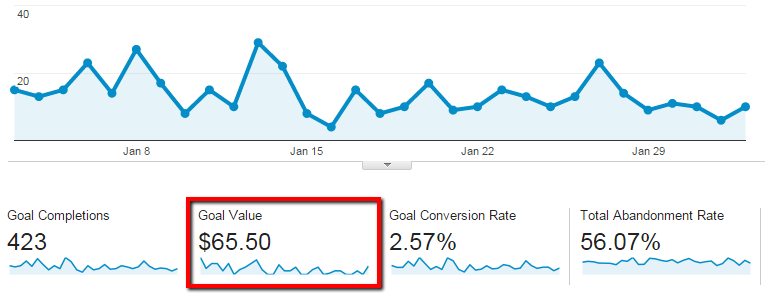Exploring What Data Is Google Analytics Goals Unable to Track
Exploring What Data Is Google Analytics Goals Unable to Track
Blog Article
Introducing the Blind Attractions: Understanding What Google Analytics Goals Can not Measure
In the world of electronic analytics, Google Analytics stands as an effective device for monitoring and examining on the internet user communications. Recognizing what Google Analytics goals can not measure is important for getting a comprehensive view of user habits and engagement.
Customer Actions on External Platforms
Understanding exactly how customers interact on outside systems is vital for enhancing on-line approaches. External platforms, such as social media sites networks, referral websites, and on the internet forums, play a considerable role in driving traffic to a business's web site. By assessing individual actions on these systems, services can get beneficial understandings into the performance of their advertising and marketing efforts and the choices of their target market.
One secret aspect of customer habits on outside platforms is the referral resource. By tracking where the customers are originating from, organizations can identify which platforms are driving one of the most traffic to their internet site. This info can aid firms designate their resources much more successfully, concentrating on the systems that generate the very best outcomes.

Offline Conversions and Communications
Examining customer actions on outside systems gives important understandings right into online techniques; nevertheless, considering offline conversions and communications is just as necessary for a comprehensive understanding of a company's total performance. While Google Analytics stands out at tracking on-line interactions, it drops short in catching the total consumer journey that often includes offline touchpoints. Offline conversions, such as in-store purchases or phone questions, play a considerable duty in numerous services' success. Ignoring these communications can result in an altered view of the effectiveness of marketing campaigns and general business performance.

Attribution Beyond Last Click
When delving right into the world of electronic advertising analytics, it comes to be vital to look past the single touchpoint of the last click for a much more thorough understanding of acknowledgment. While Google Analytics supplies useful understandings right into user actions, counting entirely on last-click acknowledgment can be limiting - what data is google analytics goals unable to track. Acknowledgment versions that go beyond the last click offer a much more nuanced view of the consumer trip, taking into consideration all the touchpoints that lead to a conversion
Attribution beyond the last click allows online marketers to assign credit to various communications along the conversion path, providing a more clear image of the efficiency of different marketing channels. By discovering multi-touch acknowledgment models such as linear, time decay, or position-based acknowledgment, services can much better designate their marketing spending plans and maximize their techniques for optimal influence.
Recognizing the influence of each touchpoint in the conversion process is crucial for making notified decisions and making the most of ROI. By embracing acknowledgment past the last click, businesses can get much deeper understandings right into client actions and tailor their advertising and marketing efforts a lot more successfully.
Cross-Device and Cross-Browser Monitoring

Likewise, cross-browser monitoring complements cross-device monitoring by recording individual actions as they switch in between different web browsers. Understanding just how customers engage with web sites on numerous browsers can assist marketing experts optimize their online experiences to guarantee consistency and functionality throughout different platforms.
Qualitative Information and User Intent
Understanding customer intent with qualitative data analysis is critical for developing targeted electronic marketing techniques that resonate with the demands and preferences of Look At This the target audience. Qualitative information gives insights into the 'why' behind individual activities, losing light on inspirations, feelings, and choices that measurable data alone can not record. By analyzing individual responses, comments, and interactions, marketers can reveal useful info about user intent, allowing them to customize their messaging, web content, and offerings to better line up with what their target market is looking for.
Qualitative data likewise aids in understanding the context in which individuals involve with a web site or application. This contextual understanding enables marketing professionals to create more relevant and personalized experiences, ultimately driving greater involvement and conversion rates. By diving right into user intent through qualitative data evaluation, services can obtain a deeper understanding of their target market, causing more effective advertising and marketing methods that meet users' needs and expectations.
Conclusion
To conclude, Google Analytics goals have restrictions in gauging user behavior on outside systems, offline conversions, acknowledgment past last click, cross-browser and cross-device monitoring, and qualitative information associated with customer intent. what data is google analytics goals unable to track. It is essential for companies to be familiar with these blind spots in order to supplement their data evaluation with other devices and methods to acquire a much more detailed understanding of their audience and enhance their overall digital advertising strategies
By analyzing individual habits on these systems, companies can gain valuable understandings right into the efficiency moved here of their marketing efforts and the choices of their target audience.
Evaluating user behavior on exterior systems provides useful understandings into online methods; nevertheless, considering offline conversions and interactions is equally critical for a detailed understanding of a firm's general efficiency.In digital advertising and marketing analytics, relocating past last-click attribution to check out cross-device and cross-browser tracking is necessary for gaining an alternative understanding of individual interactions throughout various platforms and gadgets. By examining customer comments, remarks, and communications, marketing professionals can reveal important information about customer intent, enabling them to customize their messaging, material, and offerings to better straighten with what their target market is looking for.
By delving right into user intent with qualitative information evaluation, companies can acquire a deeper understanding of their target audience, leading to more reliable marketing strategies that fulfill users' assumptions and requirements.
Report this page